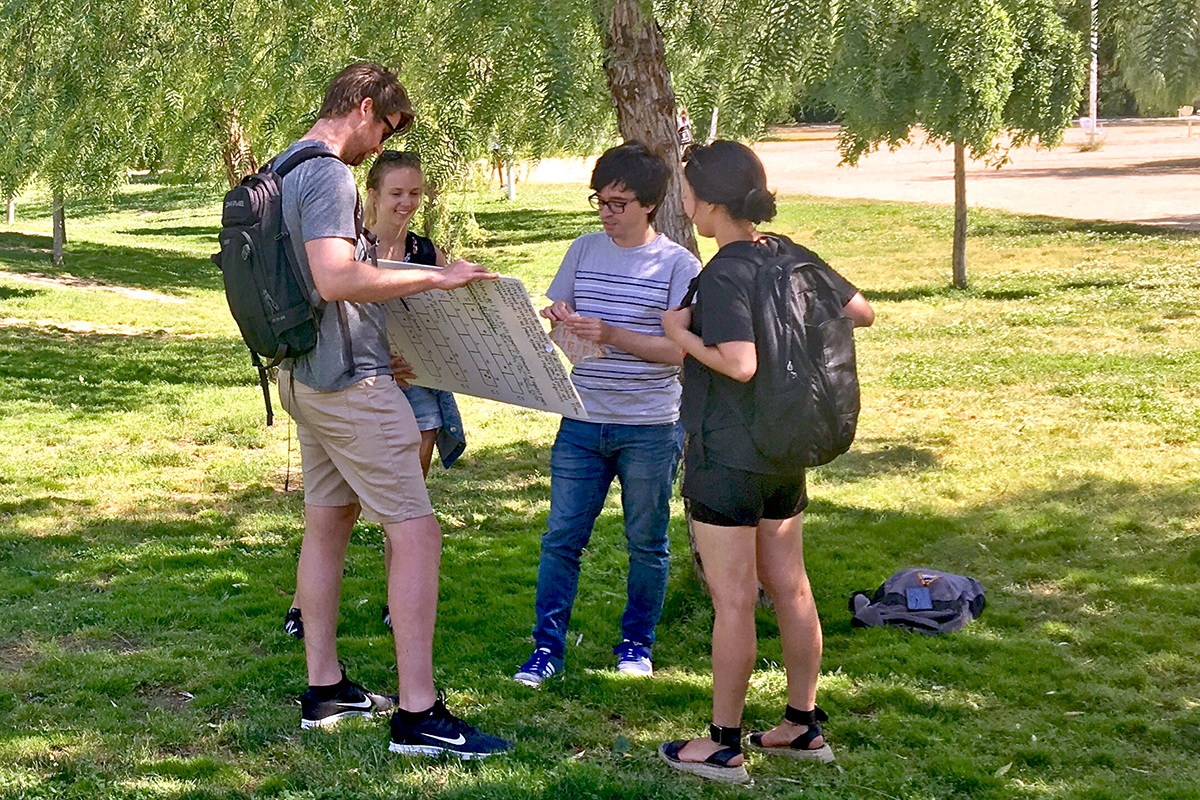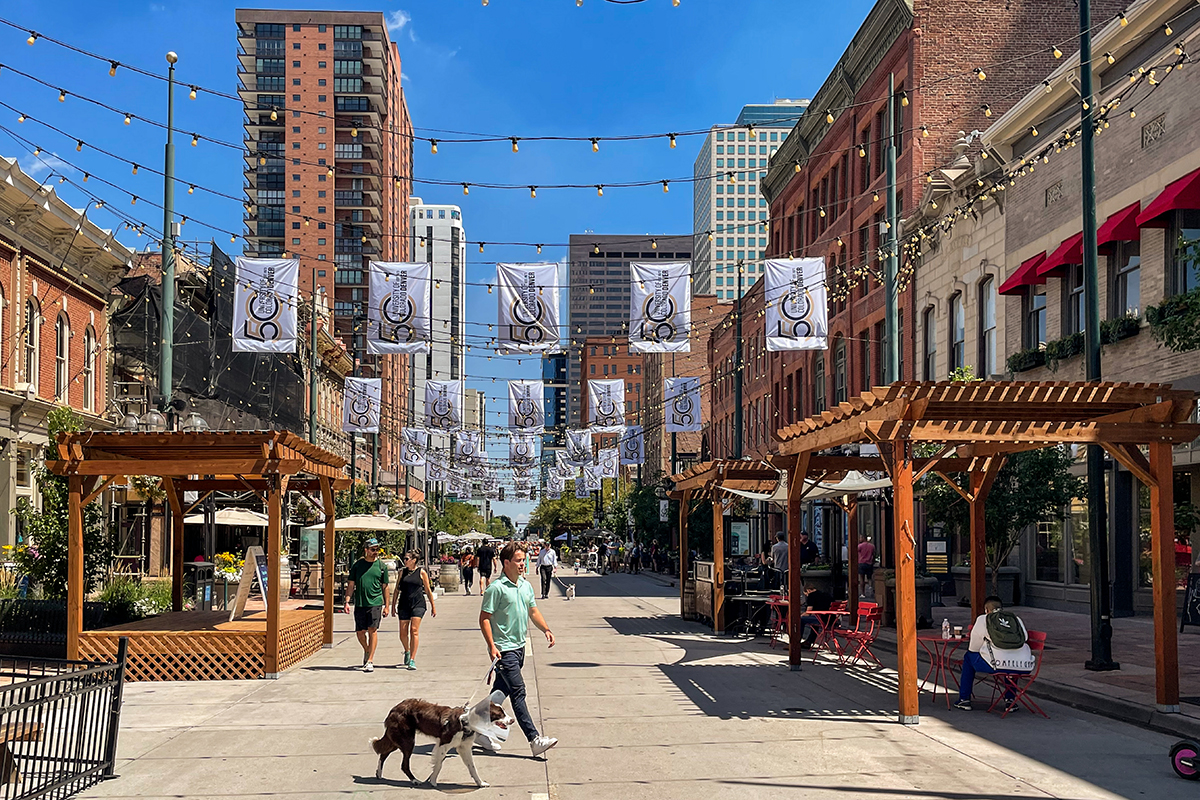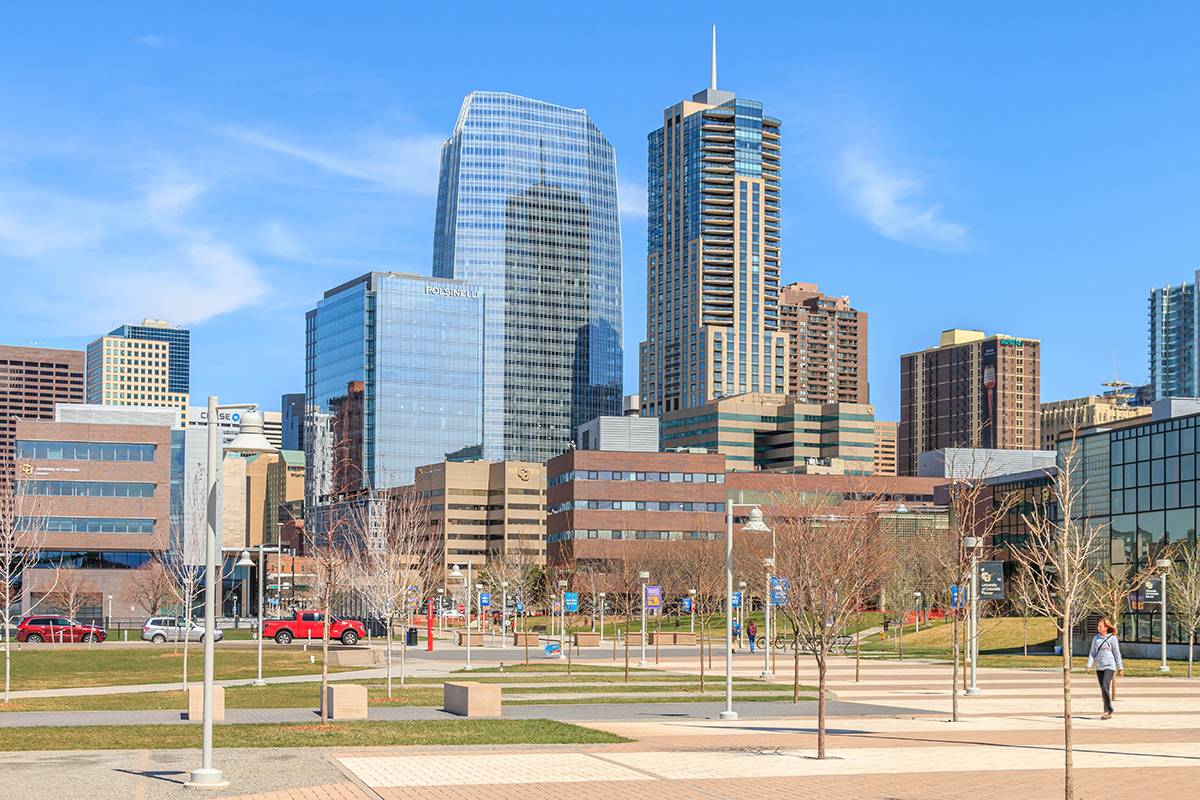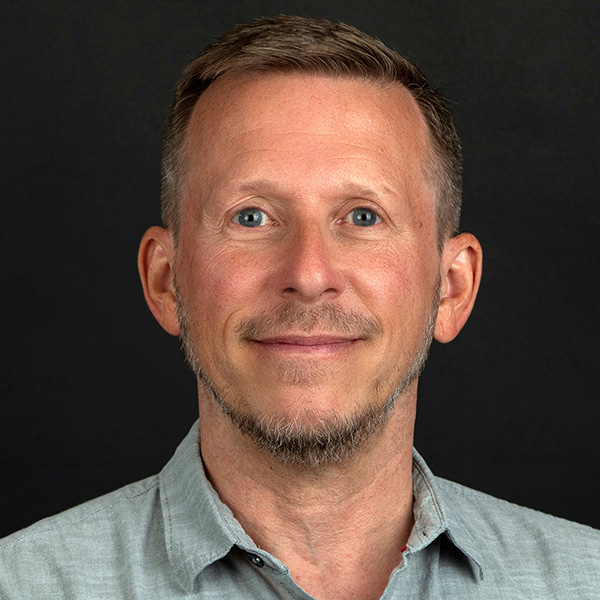Master of Urban Design
The Master of Urban Design (MUD) at CU Denver is a STEM-designated post-professional degree program for individuals who seek a career in urban design practice or for current planning and design professionals who want to enhance and expand their existing practice with urban design knowledge and expertise.
Using Colorado’s diverse urban landscapes as a laboratory for real-world learning, CU Denver’s MUD program will prepare you to become an exceptional urban design thinker, practitioner, and leader.
Our students and faculty collaborate closely with urban design professionals and local communities to explore innovative urban design solutions for project sites throughout the region and, in partnership with our Urban Design Advisory Council, promote urban design as the best approach for shaping communities that are sustainable, inclusive, healthy, and inspiring.
The MUD program consists of nine courses totaling 36 credits: one studio and three lecture courses in the fall, one studio and three lecture courses in the spring, and our global travel studio in the summer. You can complete the program in a single calendar year as a full-time immersive experience, or you can pursue the degree on a part-time basis over a longer timeframe.
To apply to the MUD program, you must hold either:
- A master’s degree in architecture, urban planning, or landscape architecture
- A professional bachelor's degree in architecture, urban planning, or landscape architecture
- A pre-professional bachelor’s degree in architecture, urban planning, or landscape architecture and two years full-time professional experience in at least one of these three fields
Students in CU Denver’s M.Arch, MLA, and MURP programs can apply to the MUD program and begin earning MUD credits before they have completed their M.Arch, MLA, or MURP program requirements through our MUD Dual Degree options.
Our MUD program will expand your perspectives and your career prospects! With a Master of Urban Design degree, you can…
- Pursue a career in urban design practice where your primary work focuses on producing urban design solutions that holistically integrate buildings, parks and public spaces, streets and bike/ped/transit infrastructure, and a diversity of uses and activities into sustainable places that prioritize people over cars
- Incorporate urban design knowledge, concepts, and skills into your existing architecture, urban planning, or landscape architecture practice, making you a better architect, urban planner, or landscape architect and giving you a competitive career advantage over your peers
CU Denver’s Master of Urban Design program is a STEM Designated Degree Program (CIP 30.3301 – Sustainability Studies). For more information about how foreign F-1 visa students may benefit by graduating with a STEM-designated degree, please visit the university’s F-1 STEM OPT webpage.
URBAN DESIGNERS CREATE GREAT PLACES THROUGH THE HOLISTIC INTEGRATION OF ARCHITECTURE, URBAN PLANNING, AND LANDSCAPE ARCHITECTURE
What is Urban Design?
At the College of Architecture and Planning, we view urban design as the holistic integration of architecture, urban planning, and landscape architecture, and embrace urban design as:
- The Design of the Public Realm that includes the form of the city and its places, focusing on the processes that produce thriving communities and shape public life over time. Thriving communities are sustainable and resilient and prioritize human-scaled design and result from inclusive and equitable design and decision processes.
- An Integrative Discipline that requires strong leadership and collaborative skills to solve complex problems and guide multi-disciplinary work at various physical and temporal scales where design is the common thread. Urban designers must have strong skills in spatial and physical design as well as systems and process thinking.
- An Implementation-Focused Practice that requires a clear understanding of the relationships between design, policy, regulations, economics, and culture and the potential of collaborative partnerships and community engagement in the delivery and evolution of urban places over time that are sustainable and equitable.
Vision and Mission
Our MUD program’s vision is that we are an international model for training the urban designers of tomorrow that works closely with urban design professionals and the community to create places that enrich people and the planet.
Our MUD program’s mission is to:
- Teach and train students to become exceptional urban design thinkers, practitioners, and leaders in their communities.
- Collaborate with urban designers to advance the profession and position it at the intersection of the city-building disciplines.
- Engage with the community to create great places that are sustainable, inclusive, equitable, healthy, and inspiring, while providing students with real-world learning experiences.
Program Hallmarks
The following four Program Hallmarks distinguish the MUD program at CU Denver and are at the heart of our urban design curriculum:
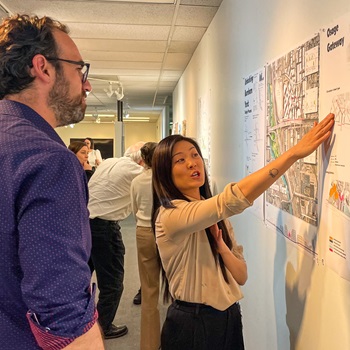 Our Master of Urban Design program prepares students for professional practice and positions them for career advancement through ongoing engagement and partnerships with distinguished practitioners in urban design, architecture, city planning, landscape
architecture, and related fields.
Our Master of Urban Design program prepares students for professional practice and positions them for career advancement through ongoing engagement and partnerships with distinguished practitioners in urban design, architecture, city planning, landscape
architecture, and related fields.
The curriculum draws significantly from practicing faculty to elevate the professional competency of students and prepare them for long-term career success. Students are exposed to the many issues that cities currently face, including planning policy; zoning and development regulations; public realm design; mobility and transportation; economics; social equity and environmental sustainability; and community engagement. This allows students to develop a deep understanding of the role of urban design in the city-building process and learn from practitioners who are actively crafting and implementing urban design plans.
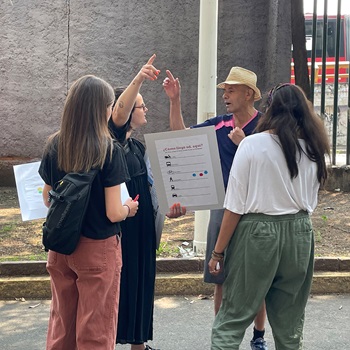 Our Master of Urban Design program develops sustained partnerships with local communities and organizations to work together to advance the goals of the MUD program, urban design practice, and the broader community through the exchange of ideas and the exploration of creative design concepts. It is critical that the design of cities and the spaces and places that urban designers help shape have people as their central focus.
Our Master of Urban Design program develops sustained partnerships with local communities and organizations to work together to advance the goals of the MUD program, urban design practice, and the broader community through the exchange of ideas and the exploration of creative design concepts. It is critical that the design of cities and the spaces and places that urban designers help shape have people as their central focus.
For urban designers to best design cities as people-centered places, they must engage with the community in meaningful ways. These partnerships recognize the wealth of resources and wisdom that already exists within communities and focus on understanding their issues, problems, and challenges. These community partnerships require students and faculty to approach engagement with a “listen and learn” attitude, foster mutually beneficial relationships, and ultimately create lasting positive impacts for all people and places.
 Our Master of Urban Design program focuses on the connections between urban form, public space, social equity and justice, ecological systems, environmental quality, and public health that exist at multiple scales. From the street to the neighborhood
and from the city to the region, students explore the complex infrastructure systems, social networks, and ecosystems that affect our built and natural environments and look to develop new paradigms and design solutions that fight against environmental
degradation, climate change, and social and racial inequities.
Our Master of Urban Design program focuses on the connections between urban form, public space, social equity and justice, ecological systems, environmental quality, and public health that exist at multiple scales. From the street to the neighborhood
and from the city to the region, students explore the complex infrastructure systems, social networks, and ecosystems that affect our built and natural environments and look to develop new paradigms and design solutions that fight against environmental
degradation, climate change, and social and racial inequities.
Emphasizing the need for multidisciplinary approaches, the MUD program focuses on social, economic, and environmental sustainability and resilience in our cities and towns and the critical role that urban design plays in addressing climate change, inequities in underserved and historically marginalized communities, and public health.
 Our Master of Urban Design program is structured to train students how to communicate confidently with other disciplines, facilitate effective teamwork, and tackle complex urban issues to create the next generation of civic and design leaders. Urban design is positioned at the intersection of multiple professions that participate in the city-building process including architecture, landscape architecture, city planning, civil engineering, and public policy and finance.
Our Master of Urban Design program is structured to train students how to communicate confidently with other disciplines, facilitate effective teamwork, and tackle complex urban issues to create the next generation of civic and design leaders. Urban design is positioned at the intersection of multiple professions that participate in the city-building process including architecture, landscape architecture, city planning, civil engineering, and public policy and finance.
A strong urban designer has a working knowledge of these allied disciplines and applies a breadth of knowledge to their professional work. The MUD program curates a student’s skillset to position them to play critical leadership roles guiding multi-disciplinary teams and to advance the careers of those already working in urban design as well as provide a rigorous and comprehensive platform for those newly embarking on an urban design career.
Program Curriculum
The MUD program curriculum features a mix of lecture and studio courses that comprehensively cover the spectrum of urban design theory and practice and emphasize hands-on experiential learning and skills development. At the heart of our curriculum are our four Program Hallmarks, which are present in all courses as common themes. To earn the MUD degree, a student must successfully complete all 36 credits.
MUD Dual Degrees
The MUD Dual Degree option gives students in the M.Arch, MLA, and MURP programs at CU Denver the opportunity to apply to the MUD program and earn MUD credits before they have completed their M.Arch, MLA, or MURP professional degree. By taking MUD lecture courses that also count as electives toward their M.Arch, MLA, or MURP, students are able to reduce the total number of credits required to earn both degrees, saving them time and money.
Adding the MUD as a dual degree provides M.Arch, MLA, and MURP students with valuable urban design knowledge and skills, vital interdisciplinary training, and competitive advantages in the job market.
The tabs below provide details about the MUD Dual Degree option with each program.
CU Denver M.Arch students may apply to the MUD program after they have completed at least 12 M.Arch credits with a minimum 3.00 GPA.
The M.Arch + MUD Dual Degree reduces the total credits required to earn both degrees by double-counting four MUD lecture courses as M.Arch electives.
M.Arch + MUD Dual Degree students take four MUD lecture courses as they progress through the M.Arch program. After completing the M.Arch requirements, students take the three MUD studios and the remaining two MUD lecture courses to conclude the MUD program. Students are then eligible to graduate and receive both their M.Arch and MUD degrees.
For more information, please review the M.Arch + MUD Information Guide and M.Arch + MUD Dual Degree Advising Sheet or contact your academic advisor.
CU Denver MLA students may apply to the MUD program after they have completed at least 12 MLA credits with a minimum 3.00 GPA.
The MLA + MUD Dual Degree reduces the total credits required to earn both degrees by double-counting three MUD lecture courses as MLA electives.
MLA + MUD Dual Degree students take three MUD lecture courses as they progress through the MLA program. After completing the MLA requirements, students take the three MUD studios and the remaining three MUD lecture courses to conclude the MUD program. Students are then eligible to graduate and receive both their MLA and MUD degrees.
For more information, please review the MLA + MUD Information Guide and MLA + MUD Dual Degree Advising Sheet or contact your academic advisor.
CU Denver MURP students may apply to the MUD program after they have completed at least 12 MURP credits with a minimum 3.00 GPA.
The MURP + MUD Dual Degree reduces the total credits required to earn both degrees by double-counting four MUD lecture courses as MURP electives.
MURP + MUD Dual Degree students take four MUD lecture courses as they progress through the MURP program. After completing the MURP requirements, students take the three MUD studios and the remaining two MUD lecture courses to conclude the MUD program. Students are then eligible to graduate and receive both their MURP and MUD degrees.
For more information, please review the MURP + MUD Information Guide and MURP + MUD Dual Degree Advising Sheet or contact your academic advisor.
Tuition & Fees
The University of Colorado Denver has one of the most affordable tuition rates in Colorado. Our tuition and fees are set by the Board of Regents, the governing body of the University of Colorado. Tuition is based on student classification (undergraduate, graduate, academic program, resident or nonresident) and you can find out what rates will apply to your situation here.
All CAP Graduate Programs have WICHE-WRGP (Western Regional Graduate Program) status, which grants in-state resident tuition to students from 15 western states including California, Washington, Oregon and Arizona.
Living in Denver
Study Abroad Opportunities
Our Master of Urban Design program is a proud partner in the academic agreement between CU Denver and the University of Chile’s Facultad de Arquitectura y Urbanismo (College of Architecture and Planning) in Santiago, Chile. This special relationship between CU Denver and the University of Chile provides MUD students the opportunity to study urban design in Chile for URBN 6700 - Urban Design Global Studio, among other potential engagements and collaborations.

MUD News

Summer Travel Study Recap: CAP Students Visit Chile and More
The Master of Urban Design (MUD) and Master of Urban and Regional Planning (MURP) programs’ focus for their summer study abroad program is on Santiago, Chile, which shares many commonalities with Denver and Colorado in terms of settlement patterns, culture, language, and urbanism, while still allowing students to experience and study urban design and urban planning from diverse and unique perspectives.
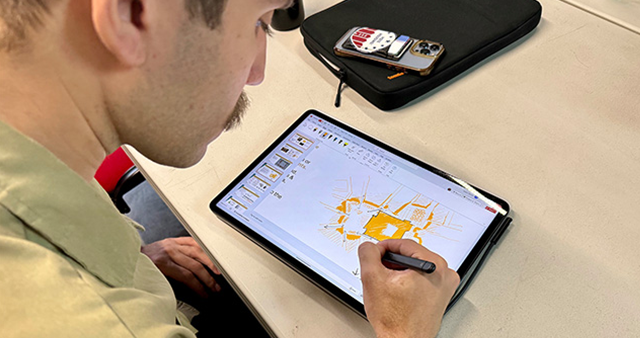
Urban Design STEM Designation
The Master of Urban Design (MUD) program at the University of Colorado Denver is now a STEM-designated degree program. This designation, F-1 STEM OPT (Optional Practical Training) effective June 2024, makes it possible for international students possessing an F-1 visa to extend their time working in the U.S. after graduation from one year to three years.
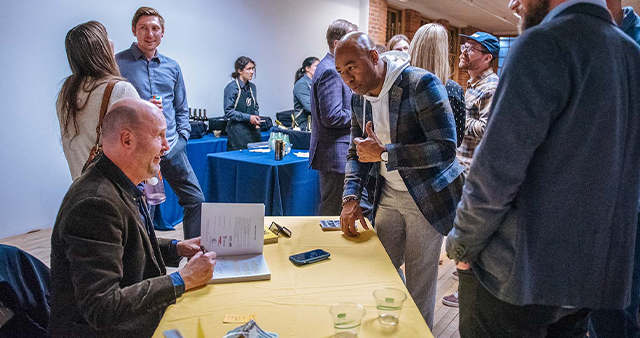
MUD Program Spotlights Missing Middle Housing
On March 2, 2023, the MUD program hosted a signature event spotlighting missing middle housing and featuring a presentation by the topic’s leading expert, Chris Parolek. The event was hosted at the soon-to-be-remodeled historic Evans School and welcomed over 150 invited guests who share an interest in housing abundance and Denver’s urban design future.
Program Contacts
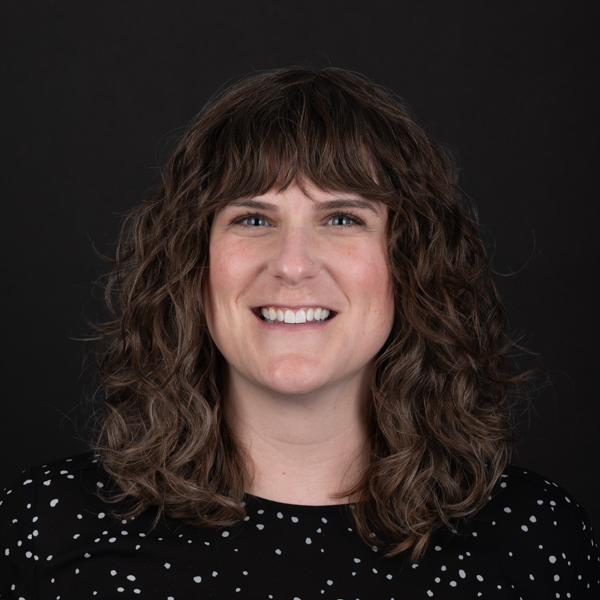
Roxy New
Senior Course Coordinator & Graduate Academic Advisor for MURP, MUD, MLA, MSHP, & PhD
Email:[email protected]

